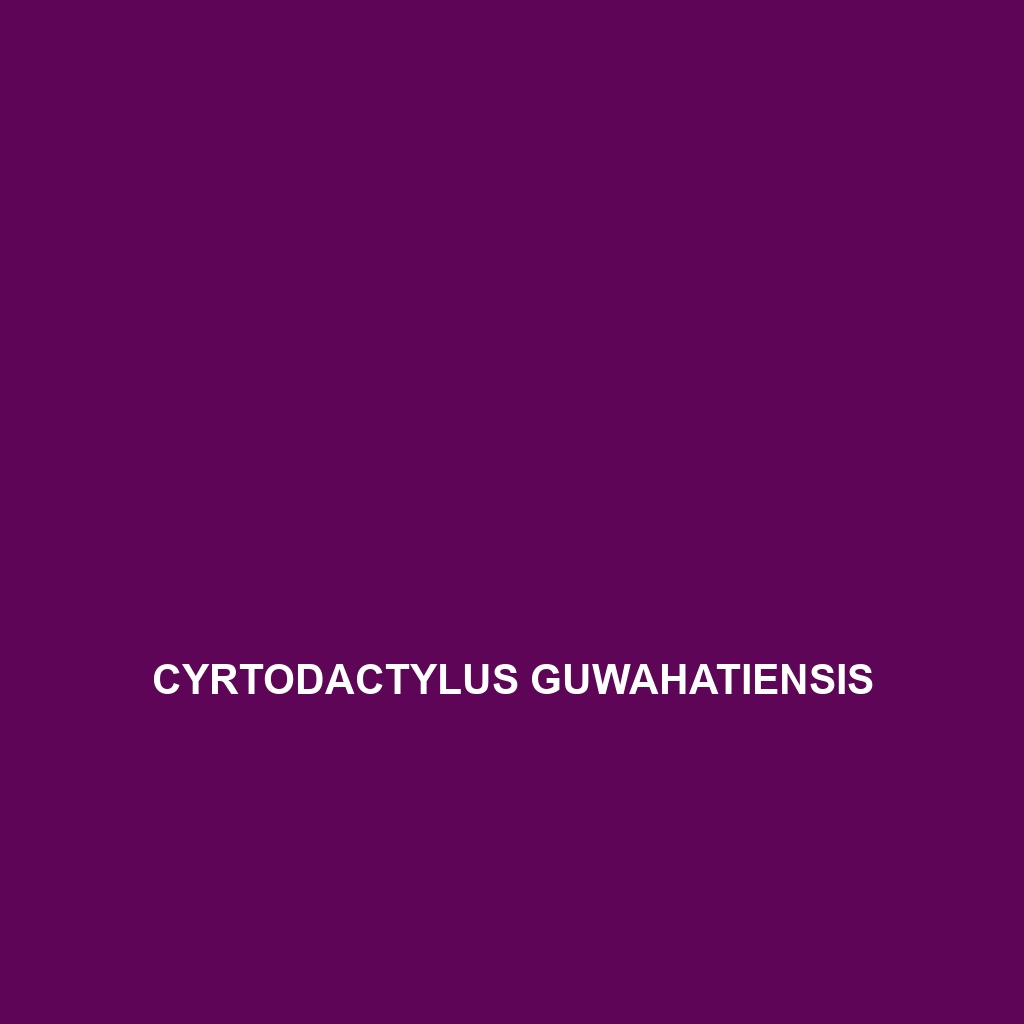Cyrtodactylus guwahatiensis: A Comprehensive Species Description
Common Name: Cyrtodactylus guwahatiensis
Scientific Name: Cyrtodactylus guwahatiensis
Habitat
Cyrtodactylus guwahatiensis is primarily found in the northeastern region of India, specifically in the state of Assam. This species thrives in subtropical and tropical dry forests, grasslands, and rocky hillsides. The preferred habitat includes areas with abundant ground cover and crevices, which provide shelter and suitable environmental conditions for its survival.
Physical Characteristics
Cyrtodactylus guwahatiensis typically reaches a length of about 10-15 centimeters. It exhibits a distinctive coloration ranging from light brown to grey, often featuring darker bands or spots that provide effective camouflage against predators. The species has a flattened body shape, with wide, clawed toes that aid in climbing and navigating rocky terrains. Its eyes are relatively large, enhancing its night vision.
Behavior
Cyrtodactylus guwahatiensis is primarily nocturnal, emerging at night to hunt and forage. During the day, it seeks refuge in crevices and under stones to avoid predators. This species is known to be territorial, often engaging in displays of aggression or vocalizations to ward off rivals. Its ability to climb and glide from rock to rock allows it to escape threats effectively.
Diet
The diet of Cyrtodactylus guwahatiensis mainly consists of insects and other small invertebrates. Common food sources include crickets, beetles, and moths, which it catches with its agile movements and quick reflexes. This gecko plays a vital role in controlling insect populations within its habitat.
Reproduction
Cyrtodactylus guwahatiensis is oviparous, with females laying clutches of two eggs during the breeding season, which typically occurs in the monsoon months. The eggs are often hidden under rocks or foliage to protect them from predators. After incubation, the hatchlings emerge, fully formed and ready to start foraging for food almost immediately.
Conservation Status
Currently, Cyrtodactylus guwahatiensis is classified as ‘Vulnerable’ on the IUCN Red List. Habitat destruction due to urbanization and agriculture, as well as climate change, pose significant threats to its survival. Conservation efforts focused on habitat preservation are essential to ensure the long-term survival of this unique species.
Interesting Facts
– Cyrtodactylus guwahatiensis is named after the city of Guwahati, where it was first identified.
– This species can be distinguished from other Cyrtodactylus by its unique pattern and coloration, making it a subject of interest for herpetologists.
Role in Ecosystem
Cyrtodactylus guwahatiensis plays a crucial role in its ecosystem as both a predator and prey. By feeding on insects, it helps maintain ecological balance, while also serving as a food source for larger predators. Its presence contributes to the overall health of the habitat, highlighting the interconnectedness of species within the ecosystem.
